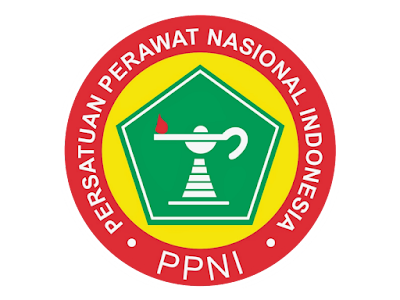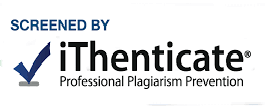PENGETAHUAN SUAMI DALAM MENGENALI TANDA BAHAYA KEHAMILAN PADA IBU HAMIL
DOI:
https://doi.org/10.35328/keperawatan.v13i1.2638Keywords:
Kehamilan, Pengetahuan, Tanda Bahaya KehamilanAbstract
Complications during pregnancy are among many danger signs during pregnancy that can lead to maternal death. These pregnancy danger signs can occur in the first trimester to the third trimester. The involvement of husbands in recognizing the danger signs in pregnancy is essential in preventing maternal mortality rate (MMR). Husbands who have proper knowledge can make appropriate and quick decisions in seeking health services if the signs occur. This study aims to determine the level of husband's knowledge in recognizing danger signs in pregnancy. Covering the service area of Rejosari Public Health Center, this is a quantitative study with a descriptive design using univariate analysis of age, education, gravida, occupation, income, and husband's knowledge in recognizing danger signs in pregnancy. An accidental sampling technique was used for sampling in the study which involved 60 respondents. Data in this study were collected by administering questionnaires and then presented in the form of frequency distribution. The results showed that the majority of respondents (60.0%) had poor knowledge of recognizing danger signs in pregnancy based on age, education, gravida, occupation, and income. The majority of respondents knew that bleeding in the early or late stage of pregnancies (80.0%), premature rupture of membranes (71.7%), lack of fetal movement (61.7%), and high fever (58.3%) as danger signs in pregnancy. On the other hand, 78.3% of respondents did not know that nausea and vomiting as well as unwillingness to eat were also the danger signs in pregnancy. In addition, 63.3% of respondents did not know that swelling of the feet, hands, and face are also danger signs in pregnancy. It is expected that health workers can provide proper health education to husbands to increase their knowledge and awareness of the danger signs in pregnancy
Downloads
References
Ayalew, A., Sisay, Fi., Erga, B., & Dkk. (2017). Universal health coverage There is more to it than meets the eye. Journal of Family Medicine and Primary Care, 6(2), 169–170. https://doi.org/10.4103/jfmpc.jfmpc
Badan Pusat Statistik Provinsi Riau (2022). https://riau.bps.go.id/publication/2022/02/25/85c4ce5fd9662f99e34a5071/provinsi-riau-dalam-angka-2022.html
Berman, A., Snyder, S. J., & Frandsen, G. (2016). Kozier and Erb’s fundamentals of nursing: concepts, process and practice (10th ed.). United States of America: Pearson Education, Inc. https://doi.org/10.1016/j.nepr.2011.09.002
BR Sebayang, W., Rambe, N. L., & Ndruru, E. (2022). Penyuluhan Kesehatan Tentang Tanda Bahaya Kehamilan Di Puskesmas Pulo Brayan Darat Medan Tahun 2022. Jurnal Ilmiah Pengabdian Kepada Masyarakat (Ji-SOMBA), 1(2), 53–56. https://doi.org/10.52943/ji-somba.v1i2.931
Chowdhury, S., & Chakraborty, P. pratim. (2017). Universal health coverage There is more to it than meets the eye. Journal of Family Medicine and Primary Care, 6(2), 169–170. https://doi.org/10.4103/jfmpc.jfmpc
Deme, M., Kitila, S., & Mengistu, G. T. (2021). Husbands’ Knowledge of Obstetric Danger Signs, and Level of Birth Preparedness and Complication Readiness and Associated Factors in Wara Jarso, North Shewa, Oromia, Ethiopia, 2019. Journal of Medicine, Physiology and Biophysics, 69, 27–38. https://doi.org/10.7176/jmpb/69-05
Deviya, A. (2022). Konstipasi Pada Masa Kehamilan. Oksitosin : Jurnal Ilmiah Kebidanan, 9(1), 59–66. https://doi.org/10.35316/oksitosin.v9i1.1652
Dinas Kesehatan Kota Pekanbaru. (2021). Rekapan Laporan PSW KIA Pekanbaru: Dinas Kesehatan Kota Pekanbaru.
Dinas Kesehatan Kota Pekanbaru. (2021). Jumlah dan Penyebab Kematian Ibu. Pekanbaru: Dinas Kesehatan Kota Pekanbaru.
Eka Noviana, R., & Puspitasari, D. (2016). Kesiapan Suami Sebagai Pendamping Persalinan Di Puskesmas Pleret Kabupaten Bantul Yogyakarta. Media Ilmu Kesehatan, 5(1), 75–82. https://doi.org/10.30989/mik.v5i1.54
Galle, A., De Melo, M., Griffin, S., Osman, N., Roelens, K., & Degomme, O. (2020). A cross-sectional study of the role of men and the knowledge of danger signs during pregnancy in southern Mozambique. BMC Pregnancy and Childbirth, 20(1), 1–14. https://doi.org/10.1186/s12884-020-03265-4
Getachew, F., Abate, S., Solomon, D., Fekade, E., & Molla, G. (2013). Men ` s knowledge towards obstetric danger signs and their involvement on birth preparedness in Aneded woreda , Amhara Regional State , Northwest. Ethiop. j. public health nutr., 3(1), 39–45.
Gize, A., Eyassu, A., Nigatu, B., Eshete, M., & Wendwessen, N. (2019). Men’s knowledge and involvement on obstetric danger signs, birth preparedness and complication readiness in Burayu town, Oromia region, Ethiopia. BMC Pregnancy and Childbirth, 19(1), 1–9. https://doi.org/10.1186/s12884-019-2661-4
Greenspan, J. A., Chebet, J. J., Mpembeni, R., Mosha, I., Mpunga, M., Winch, P. J., Killewo, J., Baqui, A. H., & McMahon, S. A. (2019). Men’s roles in care seeking for maternal and newborn health: A qualitative study applying the three delays model to male involvement in Morogoro Region, Tanzania. BMC Pregnancy and Childbirth, 19(1), 1–12. https://doi.org/10.1186/s12884-019-2439-8
Jewaro, M., Yenus, H., Ayanaw, Y., Abera, B., & Derso, T. (2020). Knowledge of obstetric danger signs and associated factors among mothers in Bahir Dar district, northwest Ethiopia: an institution-based cross-sectional study. Public Health Reviews, 41(1), 1–8. https://doi.org/10.1186/s40985-020-00132-7
Jungari, S., & Paswan, B. (2019). What he knows about her and how it affects her? Husband’s knowledge of pregnancy complications and maternal health care utilization among tribal population in Maharashtra, India. BMC Pregnancy and Childbirth, 19(1), 1–12. https://doi.org/10.1186/s12884-019-2214-x
Kartikasari, R. indah, & Payana, S. H. dwi. (2017). Pregnancy Exercises Dengan Kejadian Konstipasi Pada Ibu Hamil Trimester II. Surya, 09(01), 54–60. https://jurnal.stikesmuhla.ac.id/wp-content/uploads/2017/09/53-60-Ratih-Indah-Kartikasari.pdf,2017
Kemnterian Kesehatan RI. (2022). Buku kesehatan ibu dan anak. Jakarta : Kementrian Kesehatan dan JICA.
Lowdermilk, L.D., Perry, E. S & Cashion, K. (2013). Keperawatan Maternitas edisi 8 buku 1. Singapore : Elsevier Mosby.
Mazirah, S. M., Adila, D. R., & Lestari, R. F. (2022). Kesadaran Ibu Hamil terhadap Tanda Bahaya Kehamilan di Puskesmas Simpang Tiga Pekanbaru. Al-Asalmiya Nursing Jurnal Ilmu Keperawatan (Journal of Nursing Sciences), 11(1), 47–61. https://jurnal.ikta.ac.id/keperawatan/article/view/2184
Megasari, K. (2021). Asuhan Kebidanan Pada Ibu Hamil Dengan Konstipasi Di Pmb Hasna Dewi Pekanbaru Tahun 2020. Prosiding Hang Tuah Pekanbaru, 93–100. https://doi.org/10.25311/prosiding.vol1.iss1.65
Mersha, A. G. (2018). Male involvement in the maternal health care system: Implication towards decreasing the high burden of maternal mortality. BMC Pregnancy and Childbirth, 18(1), 1–8. https://doi.org/10.1186/s12884-018-2139-9
Murniati, Nyorong, M., & Begum Suroyo, R. (2022). Faktor yang Memengaruhi Suami Siaga Pada Masa Kehamilan di Poskesdes Keude Aceh Kecamatan Banda Sakti Kota Lhokseumawe Factors Affecting Husband on Pregnancy at Poskesdes Keude Aceh Banda Sakti District Lhoekseumawe City. Journal of Healtcare Technology and Medicine, 8(2), 1183–1192.
Noviana R, Puspitasari D. Kesiapan Suami Sebagai Pendamping Persalinan Di Puskesmas Pleret Kabupaten Bantul Yogyakarta. Media ilmu kesehatan [Internet]. 2019Nov.9 [cited 2024Jul.7];5(1):75-2. Available from: https://ejournal.unjaya.ac.id/index.php/mik/article/view/148
Nusawakan, A. W., Tesabela Messakh, S., & Jambormias, S. (2019). Faktor Yang Mempengaruhi Pengambilan Keputusan Dalam Penggunaan Layanan Kesehatan Pada Wilayah Kerja Puskesmas Tawiri. Media Ilmu Kesehatan, 6(2), 129–138. https://doi.org/10.30989/mik.v6i2.188
Nyasiro, S. G., Theodora, A. L. B., & Stephen, M. K. (2019). Factors influencing men’s involvement in antenatal care services: a cross-sectional study in a low resource setting, Central Tanzania. Reproductive Health, 16(52), 1–10.
Oguntunde, O., Nyenwa, J., Yusu, F., Dauda, D. S., Salihu, A., & Sinai, I. (2021). Factors associated with the knowledge of obstetric danger signs, and perceptions of the need for obstetric care amongst married young women in northern Nigeria. African Journal of Primary Health Care and Family Medicine, 13(1), 1–9. https://doi.org/10.4102/PHCFM.V13I1.2557
Reeder, Martin, & Griffin. (2017). Keperawatan maternitas edisi 18 volume 2. Jakarta: Buku Kedokteran EGC.
Shitie, A., Dilnessa, T., Ayalew, S., & Tadesse, B. (2022). Knowledge and factors associated with obstetric danger signs among married men in Dessie town, South Wollo, North-East Ethiopia: A community-based cross-sectional study. BMJ Open, 12(9), 1–10. https://doi.org/10.1136/bmjopen-2022-063936
Simbolon, P. (2021). Perilaku kesehatan. Jakarta: CV. Trans Info Media.
Suhartika, T., & Mulyati, S. (2021). Pengaruh Film Animasi Tanda Bahaya Terhadap Pengetahuan Dan Sikap Suami Ibu Hamil Dalam Mendeteksi Komplikasi Kehamilan. Jurnal Riset Kesehatan Poltekkes Depkes Bandung, 13(1), 195–201. https://doi.org/10.34011/juriskesbdg.v13i1.1865
Widiayastuti, Y. &, Widiyastuti, D., Studi, P., Terapan, S., Kebidanan, J., & Tasikmalaya, P. K. (2017). Peran Pendidikan Kesehatan dengan Media Leaflet dan Audiovisual (Video) Terhadap Pengetahuan Suami tentang Tanda Bahaya Kehamilan dan Nifas. Journal of Maternity Care and Reproductive Health, 4(2), 178–193. http://repo.poltekkestasikmalaya.ac.id/158/
Woldeamanuel, G. G., Lemma, G., & Zegeye, B. (2019). Knowledge of obstetric danger signs and its associated factors among pregnant women in Angolela Tera District, Northern Ethiopia. BMC Research Notes, 12(1), 8–13. https://doi.org/10.1186/s13104-019-4639-8
World Health Organization (WHO). (2019).https://www.who.int/en/newsroom/fact-sheets/detail/maternal-mortality Diakses Pada Tanggal 5 Februari 2021
Downloads
Published
Issue
Section
License
Copyright (c) 2024 Al-Asalmiya Nursing: Jurnal Ilmu Keperawatan (Journal of Nursing Sciences)

This work is licensed under a Creative Commons Attribution 4.0 International License.














